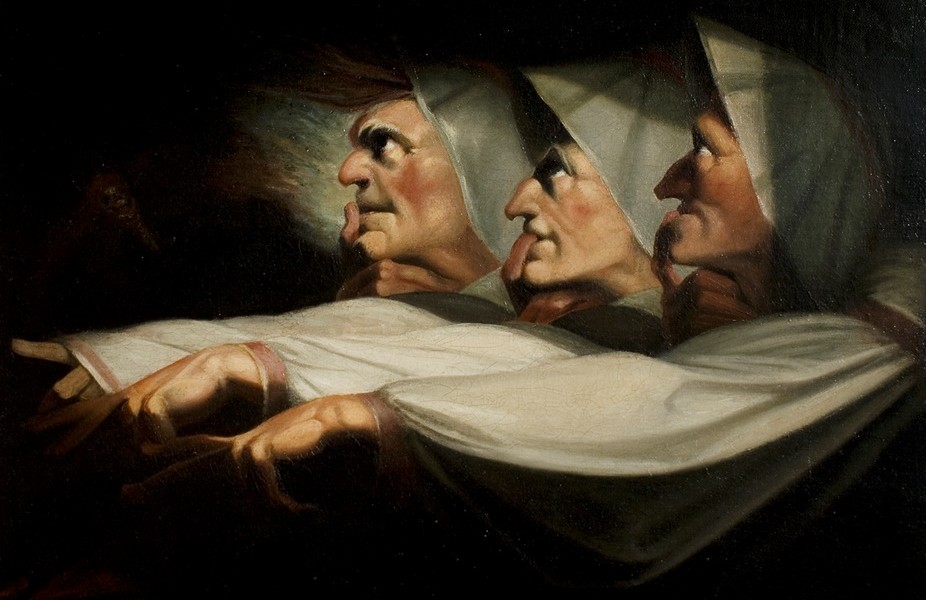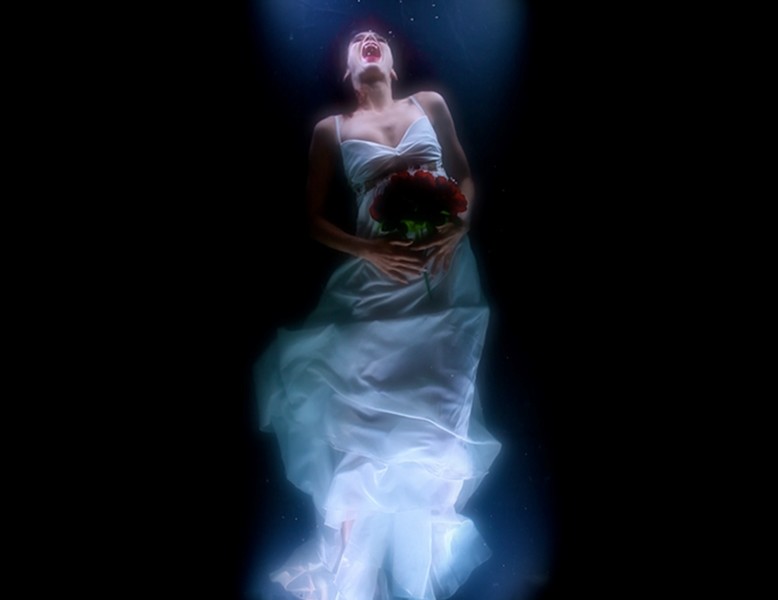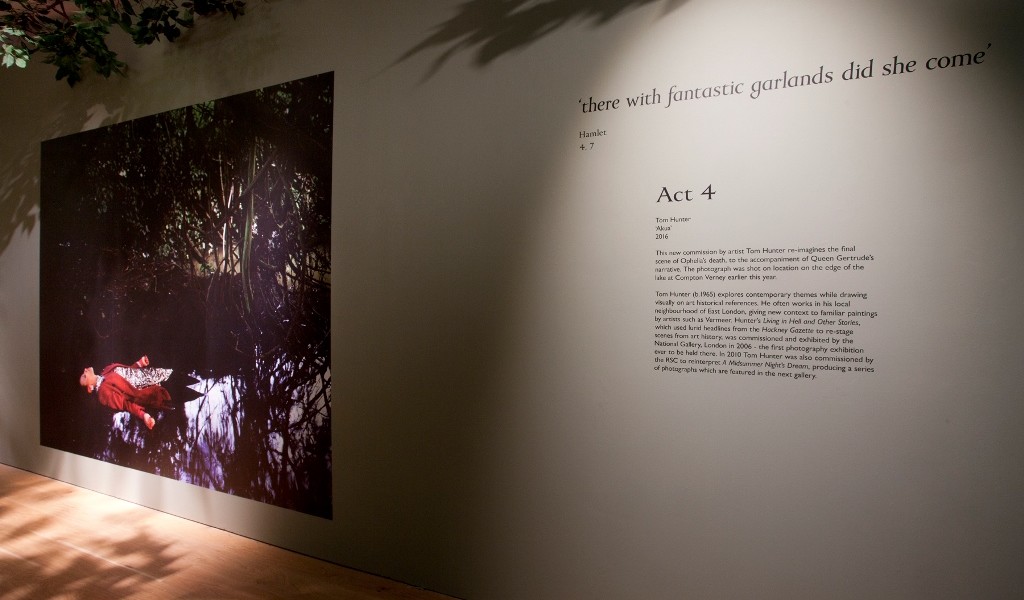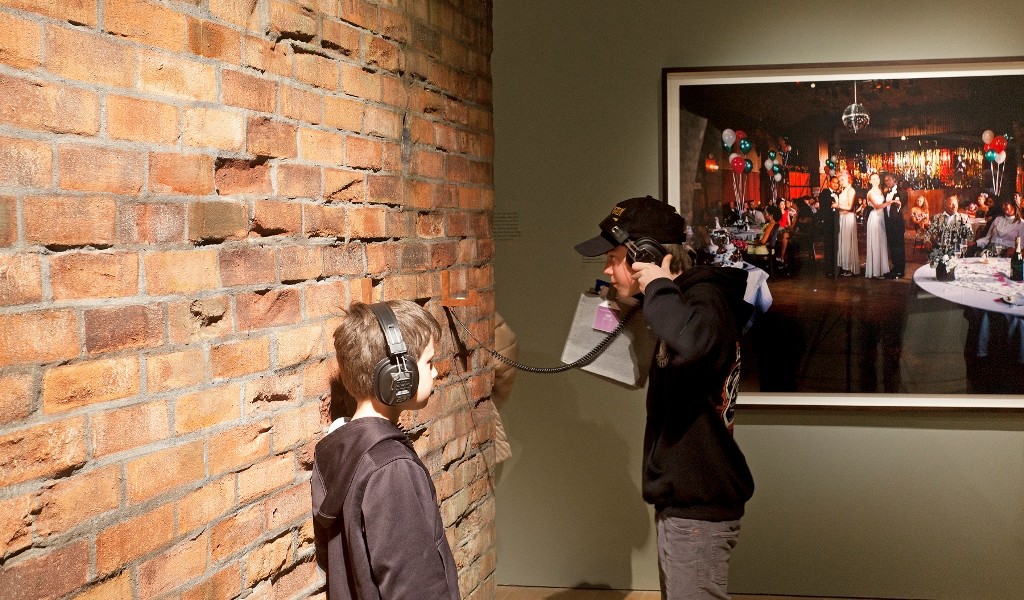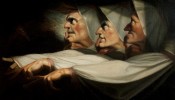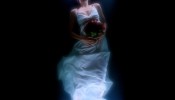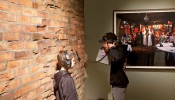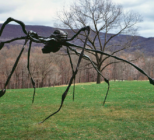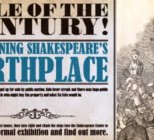Shakespeare in Art: Tempests, Tyrants and Tragedy at Compton Verney is a unique exhibition that brings together the vision of a set designer and the setting of an art gallery and is arranged over eight ‘acts’ featuring six plays including The Tempest, Hamlet, A Midsummer Night’s Dream, Macbeth, Henry VIII and King Lear.
More than 70 works including paintings, drawings, engravings, woodcuts and photos have been sourced from across the UK for the exhibition as well as specially commissioned works. Works have been loaned from museums and galleries in Bolton, Birmingham, Edinburgh and York, as well as Tate and the V&A in London and the show will also include a number of key works from the RSC’s own, rarely publicly displayed art collection. A further eleven works have been loaned from the Shakespeare Birthplace Trust.
As well as this there is specially commissioned audio, drawing on excerpts from Shakespeare’s plays, from leading RSC actors that bring to life scenes from some of the major paintings. There is also a specially commissioned artwork from one of British art’s brightest talents including acclaimed photographer, Tom Hunter.
“It was quite a steep learning curve, I have never designed an exhibition before and they were quite brave to have me,” says Brimson Lewis. “The RSC were very keen to grab the opportunity of working on the 400th anniversary – they have a number of paintings in its collection that needed to see the light of day.”
For example Henry Fuseli, ‘Macbeth’, Act I, Scene 3, the Weird Sisters is part of the exhibition and has been brought out of the RSC storage and conserved.
“I was keen to find a narrative as you would as a theatre designer trying to design a the set for a play,” says Brimson Lewis. “I wanted to illuminate this story of fine artists responding to Shakespeare’s work. And also to see how a designer working in theatre with a director and audience could respond to a gallery exhibition which is one-to-one.”
As well as Fuseli’s painting Shakespeare in Art: Tempests, Tyrants and Tragedy will focus on those pivotal Shakespeare plays which have motivated artists across the ages – from Sargent, Rossetti, Blake, Watts and Romney to Karl Weschke, Kate Tempest and Tom Hunter – exploring the enduring appeal of the Elizabethan playwright.
“It is fascinating how artists through the centuries have responded to Shakespeare, especially in the 18th and 19th centuries and then in the 20th century a huge gap. Whether this was because film had taken off or whether artists lost Shakespeare’s inspiration I don’t know, but we started to see a reemergence with Henry V during WWII, which was more to do with propaganda. Maybe they go in cycles as a metaphor.”
That is where Compton Verney were able to assist with one of the highlights of the exhibition being David Farrell’s ‘behind the scenes’ photographs from Sir Peter Hall’s 1968 film of A Midsummer Night’s Dream, starring Judi Dench, Diana Rigg, Helen Mirren, Ian Holm and Ian Richardson, which was shot entirely on location at Compton Verney. Many of these have never been publicly exhibited before.
There is also a dedicated room to one of the most acclaimed set designs – a 1912 production of Hamlet at the Moscow Art Theatre – with a series of woodcuts from the V&A, which have also never been publicly displayed before.
Brimson Lewis says that the RSC has always commissioned artists over the years such as Tom Hunter to come up with contemporary interpretations. On show at Shakespeare in Art Hunter has created a new response to the drowning of Ophelia in Hamlet taken of a model as Ophelia in the grounds at Compton Verney.
“Theatre practitioners want to see Shakespeare portrayed as a contemporary writer – his plays are so strong they respond to any contemporary thinking – I didn’t want it to be Elizabethan,” says Brimson lewis.
For the Tempest Brimson Lewis has created a new experience where visitors walk on board a ‘ship’ with the floor slightly angled to give an ‘at sea feel’ and the play’s Isle of Noises is recreated with sounds by the RSC sound department. The gallery has tide marks on the walls, ships planks underfoot and the sound of crashing waves to help bring the play to life for visitors.
Each gallery has a brief history of the play with and information to highlight the links between the works, when they were painted and the themes that inspired them. “I didn’t want to swamp the paintings, they have to have their own resonance,” he says.
What has been really good says Brimson Lewis is to have actor, writer and painter Anthony Sher on board to give his input and on display is a self-portrait of him performing as Prospero in a 2009 production offering a unique contemporary perspective on one of Shakespeare’s most well‐known characters.
“I wanted to give a slightly heightened theatre and a few surprises along the way,” he says. “In A Midsummer Night’s Dream you expect exquisite woodland but I thought we should include an element of surprise in reference to the play within a play. So we constructed a wall, which is a very urban setting with a chink in it where you can peer in and look at Titania while an actor speaks the lines from the play as she lies asleep on her bower.”
Instead the conventional portrayal the viewer sees a contemporary photograph by Tom Hunter of a modern Titania lying over a pool table. “It has been liberating – out of it came a different response – it’s more friendly, sensorial and visitors will be using their eyes and ears.”
Discussions between Compton Verney and the RSC on developing an exhibition began four years ago – and the initial idea was to have a costume exhibition but it was decided that the exhibition should have a broader remit.
“In the process I went to see a number of Shakespeare plays and when you see them on stage you realise how transportive they are,” says Antonia Harrison, curator at Compton Verney. “That’s the key to this exhibition. We are taking the visitor on a theatrical journey through the plays, we chose paintings with emotional content. It’s been a really great opportunity to work in a different way. The RSC brought in experience and a great approach.”
Compton Verney had previously worked with film director Peter Greenaway on its opening exhibition in 2004 and Harrison says he radically changed the spaces into an immersive, physical narrative. She says this model of working with theatre and film could work in smaller galleries and venues and that as a concept it brings a three-dimensional approach.
“We sometimes get extra depth from standing back and seeing what we could have – it doesn’t have to be expensive, it’s about ideas and organising. As a model it’s an excellent idea and we could possibly do the same in the future. I think we have seen huge benefit, it’s a different looking show.”
As a curator Harrison say she has enjoyed the creative freedom from the theatre on this exhibition. “It goes without saying that the visitor to a gallery has to be in the right frame of mind but what this exhibition does is get you three quarters of the way there as you are immersed in the paintings from the start. What is clever is that Stephen has managed to enhance the artworks and not overwhelm them.”
Shakespeare in Art: Tempests, Tyrants and Tragedy runs at Compton Verney Art Gallery until 19 June.
Main Image
In the Tempest gallery Stephen Brimson Lewis, Royal Shakespeare Company’s Director of Design, has created a new experience where visitors walk on board a ‘ship’ with the floor slightly angled to give an ‘at sea feel’



